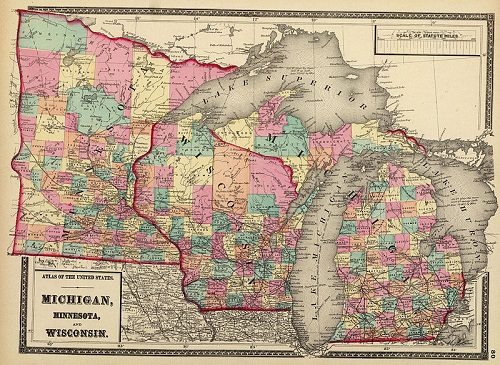
August 13, 2013; Capital Times
As reported in The Capital Times out of Madison, Wisconsin, “Minnesotans love funding the arts so much that voters in 2008 approved a constitutional amendment to divert a portion of sales tax revenue for 25 years to the arts and entertainment.” Stop for a moment to process that. Remember what was going on in 2008, economically speaking? Minnesotans clearly do value the arts. Or maybe they’re just better at math: according to a study of the financial benefits of arts-related tourism, nonprofit arts groups and their audiences directly spent $1 billion in Minnesota in 2010.
On the other side of the state line, the tally in Wisconsin the same year was just over half that amount, at $535 million. And apparently people from western Wisconsin don’t hesitate to cross that state line and visit the Twin Cities for cultural experiences, which compounds the challenge for Wisconsin and its arts groups.
Minnesota ranks No. 1 in the nation in spending $6.36 per capita on its state arts agency, while Wisconsin is near the bottom of the list at No. 47, spending only 13 cents per capita, according to new figures from the National Assembly of State Arts Agencies. (It seems worth noting that California is No. 48.)
Sign up for our free newsletters
Subscribe to NPQ's newsletters to have our top stories delivered directly to your inbox.
By signing up, you agree to our privacy policy and terms of use, and to receive messages from NPQ and our partners.
As recently as 1992, Wisconsin was near the middle of the pack at No. 30, but has been slipping ever since. In 2011 Gov. Scott Walker slashed funding for the Wisconsin Arts Board from $2.4 million to $850,000 and rolled it into the Department of Tourism. (Presumably Wisconsin’s Department of Tourism, although he seems to have given Minnesota tourism a boost along the way.)
Anne Katz, Executive Director of Arts Wisconsin, continues to advocate with state legislators about the ROI for supporting the cultural sector—in both human and economic terms. Like so many of her peers around the country, she makes the case for the important contributions offered by a vibrant creative economy.
One such effort comes from Creative Alliance Milwaukee, who may be on to something big with their mission to “drive economic prosperity as a catalytic hub, growing our creative industries by leveraging applied creativity in education, commerce and culture.” They have created a region-wide laboratory that brings together “creatives” from diverse places—like local theater companies and design firms, Harley-Davidson and Target, and multiple disciplines from local universities—to see what they all might learn from each other.
Wisconsin may yet catch up.—Eileen Cunniffe
EDITOR’S NOTE: The text of this article has been altered from its initial form, wherein the author misattributed the influence of the Creative Alliance Milwaukee to the state of Minnesota, rather than Wisconsin. The Nonprofit Quarterly regrets the error.













